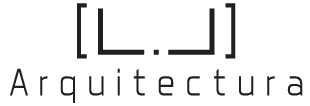Google recently updated its documentation about ranking factors, removing page experience from the “ranking systems” documentation. It doesn’t mention HHTPS directly in its current documentation about page experience, but does mention security. While we captured over 40 different page metrics for each URL examined, most did not show any significant influence on search ranking. This was largely expected, as (for example) the number of connections a web browser uses to load a page should likely not impact search ranking position. For the purposes of brevity, in this section we will just highlight the particularly noteworthy results.
How Google Search’s Engine Works & How to Get on Page 1
In their quest to provide searchers with the best answers to their queries, search engines like Google parse your website’s content to determine its quality. On-page SEO optimizes internal website elements such as content and meta tags, while off-page SEO focuses on external factors like backlinks and online reputation management. This involves enhancing various on-page elements, such as content, meta tags, headings, images, internal links, and the overall user experience.
With effective tools like Serpple, you can manage multiple client sites while tracking keyword performance affordably. Social signals are the likes, shares, and comments that come from various social media platforms. These do in fact have an indirect impact on SEO, although they aren’t a direct ranking signal. However, the more substantial the social presence, the greater the traffic and engagement, which sends signals of relevance to search engines. Thin content adds very little value for users and contains shallow information – or at best unoriginal. Pages with thin content rarely rank high because they do not meet the quality ranking factors that Google prescribes.
Try our free Marketing Calculator
However, statistics shows that websites with fewer grammar mistakes tend to rank better in SERPS. After the exact match domains algorithm update, the value of exact match domains has decreased considerably. Before purchasing a new domain, analyze the website’s backlinks and history to determine if the website has been penalized or deindexed from Google’s results before. While head titles may not play a critical role in your overall SEO performance, it’s best to use them in your content along with your most important keywords.
- Certain topics, such as medical and financial queries, can be especially challenging to rank for in Google.
- Taking a data-driven approach helps refine your strategies and enhances your site’s visibility.
- Creating lists typically involves using a combination of Google and keyword tools (either free or paid) to find all the related keywords to your keyword seeds.
- In this post, you’ll find the 40 most important SEO ranking factors along with actionable tips that will help you improve your SEO considerably.
See why 1000’s of businesses have trusted HigherVisibility since 2009. In SEO, a higher CTR means that a higher percentage of people who saw your listing found it relevant enough to click on. SEO Anomaly We evolve and continually enhance your digital presence to drive traffic and improve conversions.
Your position in web results is also a factor, so search engine optimization (SEO) best practices apply. By including the NAP details above the fold, businesses ensure that visitors can quickly identify key information about their establishment. This not only improves user experience and trust but also aligns with local SEO best practices, as search engines can easily recognize and verify the business’s location information. Remember to keep this information consistent across your website and other online listings to build trust and credibility with both users and search engines. The key to capitalizing on citation signals lies in their consistency and accuracy.

